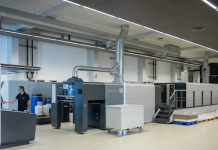According to Wikipedia, Industry 4.0 is the current trend of automation and data exchange in manufacturing technologies. It includes cyber-physical systems, the Internet of things and cloud computing. The crucial conversation happening in your boardroom shouldn’t be about your product, your competitors or your market, it should be about how Industry 4.0 will change business.
In effect, Industry 4.0 is the fourth Industrial Revolution, following those brought about by the advent of steam power, then electric power and, most recently, computing power. Industry 4.0 harnesses the power of connectivity and the Internet of Things to transform design and production.
Logistics and maintenance across industries; advanced robotics; artificial intelligence; cloud computing; sensors; data analytics and digital fabrication may sound like lofty ideas for your business. But fail to plan for their integration, and you may as well go back to powering your plant with steam.
Industry 4.0 will see manufacturers using virtual laboratories to design and develop products and test their production in simulated environments, before putting them into production – a process which will also be monitored, tweaked and refined thanks to millions of continuous inputs from the big data sphere.
They’ll then be able to track their products throughout their life span, offering upgrades using broadband connectivity and additive manufacturing processes such as 3D printing.
Quinton Harley, founder of South African company Morgan 3D Printing, said the 3D printing technology required as a component of Industry 4.0 is already available here. ‘Although it’s still expensive, it is crossing the threshold of becoming economically viable. The main advantage is that you don’t have to employ as many highly skilled artisans to manufacture the items, bringing labour costs down.’
Businesses will need to get ready for the exponential speed of change. Bradley Schmidt, marketing consultant at 3D printing specialists Rapid 3D, said the technology is already more prevalent in South Africa than many would think. ‘Additive manufacturing has been happening for more than a decade in the jewellery industry,’ he said. ‘A few of the industries that are using the technology right now include medical labs, surgery planning, prosthetics, dentistry and small parts replacement.’
Harley said that while there are many great examples in Europe where factories employ Industry 4.0 technologies to increase productivity and reduce costs, South African businesses are a little more conservative. ‘The main hurdle is education,’ said Harley, ‘people still think of 3D technologies as being too expensive and technically hard to do, which isn’t the case.’ Rapid 3D MD David Bullock concurred: ‘The misunderstanding around different 3D printing technologies clouds this picture. There are many areas where the technology is commonplace. The hype around low-cost consumer printers has skewed things.’
Karthi Pillay, Africa manufacturing industry leader at Deloitte South Africa, whose team produced the Deloitte South Africa Industry 4.0 Report, said industries in Africa have an advantage over developed markets when it comes to preparing for Industry 4.0, because they are not weighed down by infrastructure legacy issues and may have little difficulty in embracing change. The report found, though, that many South African manufacturers would face major talent challenges when it comes to planning for digital transformation towards Industry 4.0. According to the report: ‘different IT skill sets, better skills blend and realignment of skills are necessary’.
A major challenge for South Africa is also the fact that there is not only a local, but also a global talent shortage for Industry 4.0 professionals. This is an opportunity for industry and government involvement in the training and development of the 3D printed parts workforce of the future.
‘If you want to remain successful and competitive in the age of the fourth Industrial Revolution, you will need to get yourself ready for the exponential speed of change, organise your business for ‘pull’, and scale the edges of your business for new innovative business models,’ was the conclusion drawn by Pillay and his team.
If that doesn’t sound like a conversation you had at your last board meeting, it should definitely be the theme of the next one.





















